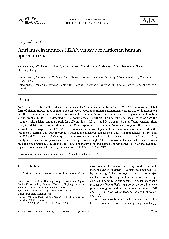摘要
Aim: To investigate whether adriamycin induces DNA damage and the formation of gamma H2AX (the phosphorylated form of histone H2AX) foci in mature spermatozoa. Methods: Human spermatozoa were treated with adriamycin at different concentrations. gamma H2AX was analyzed by immunofluorescent staining and flow cytometry and doublestrand breaks (DSB) were detected by the comet assay. Results: The neutral comet assay revealed that the treatment with adriamycin at 2 [mu g/mL for different times (0.5, 2, 8 and 24 h), or for 8 h at different concentrations (0.4, 2 and 10 mu g/mL), induced significant DSB in spermatozoa. Immunofluorent staining and flow cytometry showed that the expression of gamma H2AX was increased in a dose-dependent and time-dependant manner after the treatment of adriamycin. Adriamycin also induced the concurrent appearance of DNA maintenance/repair proteins RAD50 and 53BPI with gamma H2AX in spermatozoa. Wortmannin, an inhibitor of the phosphatidylinositol 3-kinase (PI3K) family, abolished the co-appearance of these two proteins with gamma H2AX. Conclusion: Human mature spermatozoa have the same response to DSB-induced H2AX phosphorylation and subsequent recruitment of DNA maintenance/repair proteins as somatic cells.
- 出版日期2008-9
- 单位浙江大学
